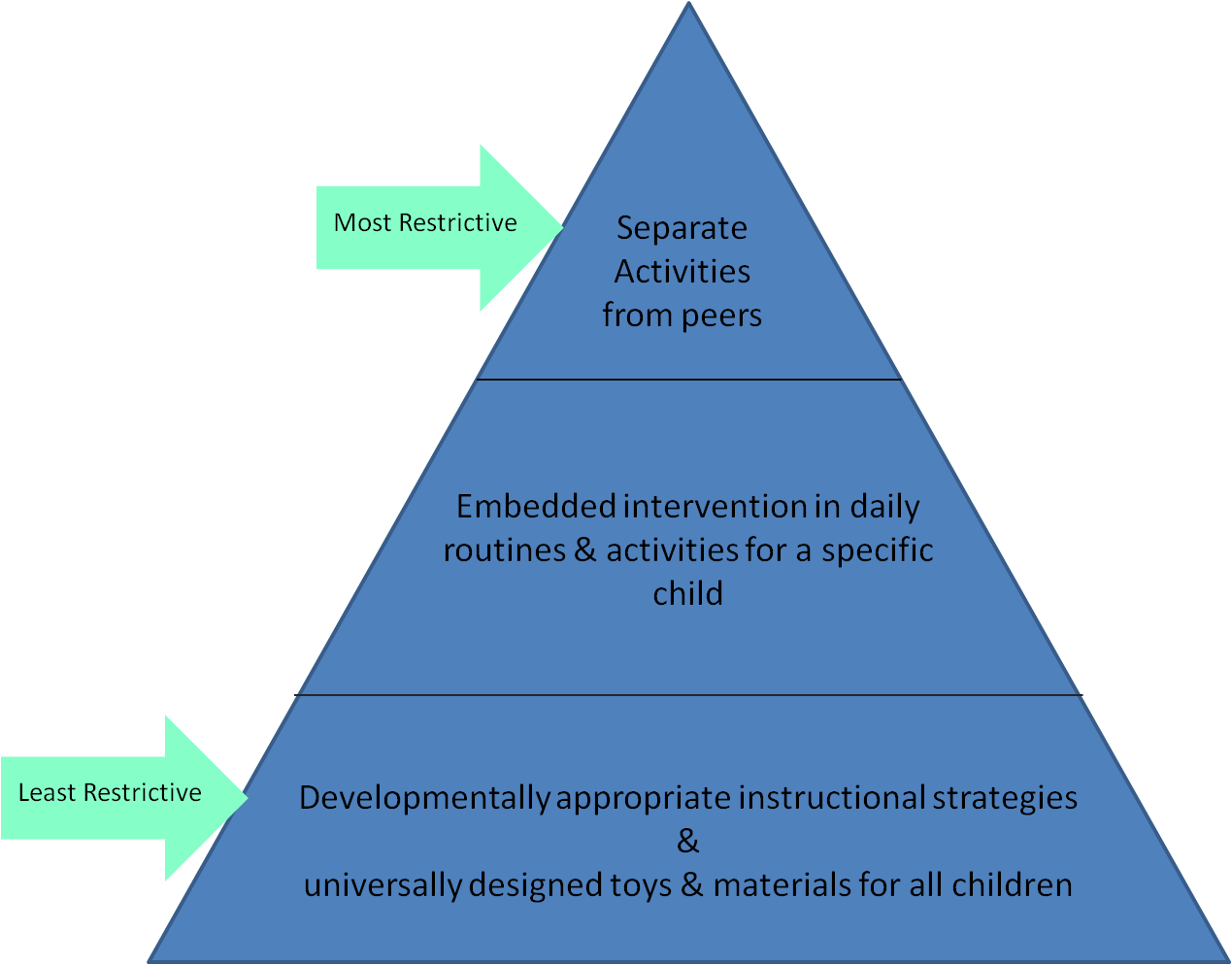Resources
-
CONNECT Module 1: Embedded Interventions includes downloadable handouts, briefs and videos.
Project CONNECT, Frank Porter Graham Child Development Center. - Routines-based intervention. Project TaCTICS
- Multimedia Training Library, Preschool Inclusion series includes training scripts and videos SpecialQuest)
Embedded Intervention
The term embedded intervention refers to specialized services and supports that are provided to children with disabilities within the context of their daily routines/activities at home and other early childhood settings. Embedded strategies assist children with special needs to participate and learn as independently as possible in their natural environments or least restrictive environment with typical peers. They provide children with numerous opportunities to achieve mastery of emerging skills by practicing them over and over in familiar contexts as independently as possible.
Adapting environments, instruction and materials
The adaptation hierarchy in Figure A below provides guidelines for selecting one or more strategies to help children with disabilities learn and participate as independently as possible in daily routines with their peers. Campbell, 2000; Mibourne & Campbell, 2007
Figure A.
Adaptation Hierarchy: Least to most restrictive instructional strategies
Resources
-
Tiered model for inclusion and support of all children’s early learning and development.
Center on the Social/emotional Foundations of Early Learning
Consider implementing strategies in this order:
1. Instructional strategies for all children
Universal design and universal design for learning principles guide the choice of developmentally appropriate instructional strategies, activities, materials, furniture and toys to facilitate the participation and learning of all children.
2. Embedded intervention for a specific child
Adaptations, including assistive technology and specialized positioning equipment, are embedded within the environment and daily activities and routines, materials, and task and instructional approaches for a specific child. Focused social support from peers and/or sibling can also be embedded in daily routines and learning activities.
3. Separate strategies for a specific child
Some instructional strategies isolate children with disabilities from participating in typical routines and learning with peers (e.g., an adult works with a child apart from peers). Adult-directed strategies, particularly in separate activities or spaces from peers, can provide intensive support and instruction. They include continuous prompting, and physical assistance such as hand-over-hand or step-by-instruction. Such strategies should only be used when less restrictive adaptations have been tried without success.


